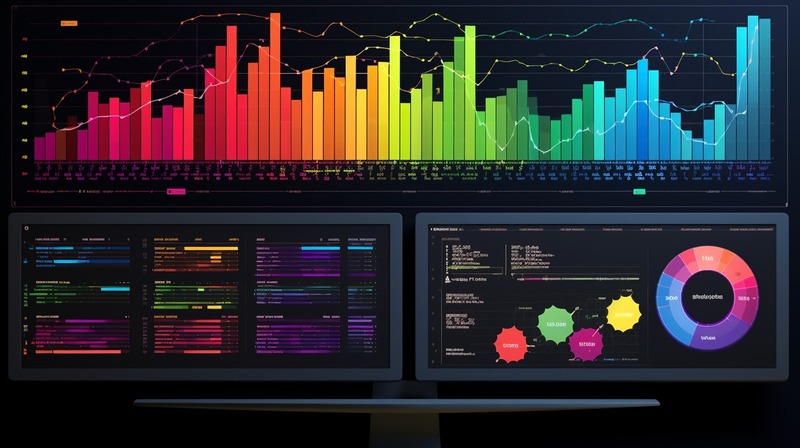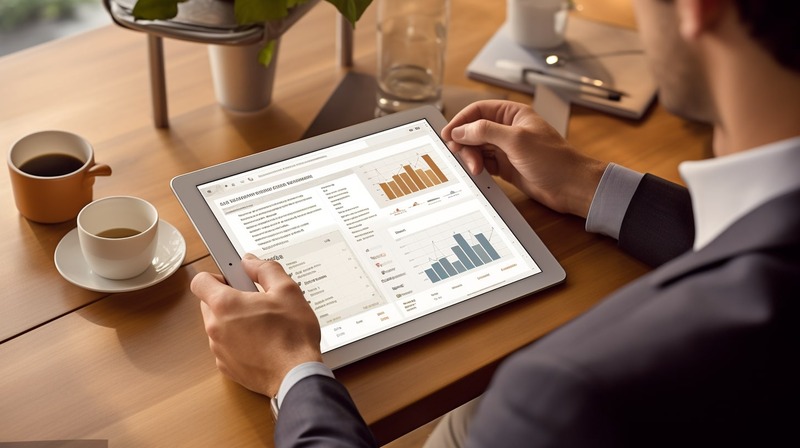Prompted by the tectonic changes the world is facing in light of the COVID-19 outbreak, we were curious to find out how in reality is affecting the data analytics and BI scene. There were predictions we made in terms of what direction data and analytics would move, but we can all agree that we can’t rely on assumptions made before the coronavirus hit. Looking at previous world-scale crises and their impact on all markets and industries, it’s certain that data and analytics would deflect from the previous course. To discover how the current situation affects the BI and analytics field precisely, we again invited Dan Sommer, Senior Director, Global Market Intelligence Lead at Qlik, and former Research Director at Gartner, to share his insights with us — this time with a focus on changes in data and analytics trends, data visualisation, digitalisation and data-driven decision-making.
Hyperight: Hi Dan, it’s an honour to meet again and have this interview with you. Before going to more technical questions, this time, I would like to start with a bit of introduction to you as a practitioner and data innovator. Can we start with your current role? You joined Qlik in 2015 as Senior Director, Global Market Intelligence Lead. Can you tell us a bit more about your role within Qlik?
Dan Sommer: Thanks for having me. Yes, sure. In the 5 years I’ve been here, it’s obviously changed a bit, but the core of it is to head up our market intelligence. When describing my charter, I usually describe it as micro and macro on one axis. What are the larger market dynamics and tech trends? Where do we, Qlik fit in that, and are we seeing the forest for the trees? That’s the macro. The micro is more tactical, operational and reactionary aspects, but not less important.


On the other axis, we have the supply and demand. Supply is the competitive landscape. And then demand, which is what do our customers and prospects say about us. When do we win and when do we lose? In my team, we are all very seasoned specialists that focus on specific aspects of these axes, and together we should form a valuable whole and synergies in these axes.


Hyperight: You worked as a Research Director at Gartner before joining Qlik. Could you tell us a bit more about your work there and how your experience in Gartner is related to what you do at Qlik?
Dan Sommer: Gartner was absolutely foundational and career-shaping for me. In the 10 years I was over there, it was where I grew from a junior analyst to research director and agenda manager for BI and Analytic markets. Right before I left, it was crowned by me chairing and keynoting Gartner’s big BI conference that year. Gartner has a strong community of analysts, and I had many great mentors who encouraged me. There was so much opportunity and so much to cover, therefore it was very easy to carve out your own role. Mine became more market-oriented. But ultimately, I felt that I needed to get some vendor experience, for my own credibility’s sake. I.e. if you lift the hood of the car, what’s underneath? To stop being a referee, and join the game. It was also an opportunity for me to get people management experience.


Hyperight: Was it there you started shaping your career as an analyst and researcher within Business Intelligence and Business Analytics, or was Business Intelligence already something that you were working with before joining Gartner?
Dan Sommer: I was actually recruited into Gartner in 2005 to be an analyst covering the printing market. It was a consequence of me prior to that, in my first job, product managing a printer market research product as at a research outfit in London, called Context. At that company, we had used a then small and obscure product called QlikView as the front-end to our offerings. That was my introduction to the space. After joining Gartner, it was apparent that the BI space was in some structural change, and was going to explode further. I was fascinated by it, and when an opening came up to cover BI, I didn’t hesitate.
Hyperight: You have written several pieces on the Qlik blog on Data and Analytics trends, including one for what to be expected in 2020. Has the COVID-19 crisis affected those predictions and to what way?
Dan Sommer: We see some clear and immediate changes in market dynamics, such as increased usage of SaaS, increased demand for shared data, intuitive visualisations and storytelling, but that the focus is on shorter, less consultancy-driven projects with rapid time to value. Mid-term, I expect companies to increase cloud budgets in the wider sense of the word, and gradually move their entire estate in a hybrid multi-cloud fashion. Then longer, more transformative projects may come back. I also see community, collective intelligence, collaboration capabilities and online learning systems as critical, and a new normal as people won’t meet physically as much. Finally, it’s clear that increased RPA and process mining to cover for lay-offs will grow in significance. As Churchill said – “never waste a good crisis”, and many CEOs are looking at business process re-engineering. Embedding analytics in those is a must. We also see companies behaving differently. Some companies will see this crisis as an opportunity to go after more advanced trends that I mention in my trends webinar. Others will go back to “keep the lights on” analytic technologies that they know work. There are no right or wrong answers there, but it depends on what type of company you are part of.


Hyperight: There are a lot of discussions online arguing the fact that this crisis has made organisations and governments to speed up digitisation and data-driven decision making? What is your take on that?
Dan Sommer: Without a doubt, and as mentioned in the previous answer, we see an immediate acceleration. In this crisis, some things are radically different, and some things are the same. What is different is that this time those companies that have made what I call the “digital switch” for their internal operations and business model will thrive. In previous crises, they tended to be swept away if they hadn’t built a critical mass of customers just yet. This time around, we see huge companies struggling because they can’t run their business efficiently if people don’t meet physically. What is the same is that we are getting early signals that Data and Analytics is top priority. This happened in 2008/2009 as well, in the financial crisis. “Necessity is the mother of invention”, and data & analytics is the raw material to make the digital switch, from physical bits to virtual bytes.
Hyperight: Do you see an increase or decrease in demand for analytics tools as a result of the COVID-19 outbreak.
Dan Sommer: On the topline, an increase. The BI space will keep growing through this, but underneath the surface, there will be winners and losers. In the last crisis of 2008/2009, there was a generational shift, from reporting-centric BI to analysis-centric BI. Companies still kept the first generation tools, but spent net new money on a second generation. This time around, I also expect a generational shift, to a third-generation technology, that can capture, synthesise and handle very distributed data and compute further and further to the edges of the organisation. Analytic answers need to be embedded into your workflows, processes and moments. That way, analytics come to you rather than vice-versa, and that way we can reach a huge constituency of users that have been untouched by analytics before; your less skilled information workers, but also “workers with information,” i.e. people on the shop-floor, warehouses, out in the trucks, etc. AI will, of course, be a natural component of this, pervasive through-out, and a pipeline that can synthesise the flow of data and bring it to the right place at the right time will be key.


Hyperight: People are exposed to a great deal of data visualisations and reports enabled by available self-service BI tools on the market. Is this helping the advance of data literacy across society?
Dan Sommer: That is a very interesting question, especially right now. If something positive comes out of this crisis is that we all intensely discuss analytic methods and argue over the visuals and numbers. “You can’t compare death tolls between countries” “they are not the same as that’s a logarithmic scale” “this is why it’s no good to compare per capita” etc. The key is interactivity, and diving underneath the visualisation. Hopefully, there will be some mutual/collective learnings in all of the discussions and argumentations going on right now, which is good for all. A lot of armchair epidemiologists will do wonders for data literacy, and for raising the status of self-service BI and visualisations. What’s increasingly clear from these discussions is that there are seldomly a right or wrong answer in data, but that it can be guidance in a bigger context.


Hyperight: What, according to you, is positive and negative when interpreting data? What should people consider when interpreting data?
Dan Sommer: As per my previous answer, there are seldomly absolute answers in data and visualisations. Many people think that, and that’s a negative. The same data can be interpreted in completely different ways, and we should all be humble to that. I also think we should be humble to the fact that data is often incomplete. But through constant combining and triangulating data, and then analysing, discussing and iterating, we’ll move the puck forward. Therefore, activating even imperfect data will get us a long way, rather than taking a binary “data has to be 100% perfect before we can do anything with it”.
Hyperight: All of us are going through some transformations with the latest developments. Could you share what your learning from this situation is and how can organisations take this opportunity to increase their advanced analytical capabilities in their organisation? What should they focus on?
Dan Sommer: My learning is that data changes all the time. Last week’s forecasts and assumptions can be completely irrelevant today. What is usually pretty stale is VERY moldable right now. Therefore, agility will trump size in this environment. Be prepared to re-evaluate everything, even “holy cows”. There are a lot of opportunities arising now, for those that can see it. For those that want to invest in advanced analytics, please don’t just do what has always been done. I’m hearing that the demand for predictive analytics will now increase in the wake of the corona crisis. That may be right, but ironically it did not predict either the 2008 market drop or this one, despite evidence being in our face. It’s time we up-level analytics methods. What I mean by that, is that rather than just doing a regression analysis, you should consider more relational analytical methods, like graph analysis and associative technologies. Synthesis, not just analysis, is key. You should also look at non-traditional data sources. There have been reports that studying traffic data outside of hospitals, and keyword searches, indicate that Covid-19 may have been circulating already in August of 2019. The learning is that there are new analytical methods and data that we should use to spot the next anomaly much earlier.
Hyperight: Last question. Is there any recent/upcoming project or activity you would like our readers to be informed about?
Dan Sommer: I would just advise everyone to attend QlikWorld next week. It will be a great gathering to discuss customer best practices, industry trends and Qlik’s roadmap.













Add comment